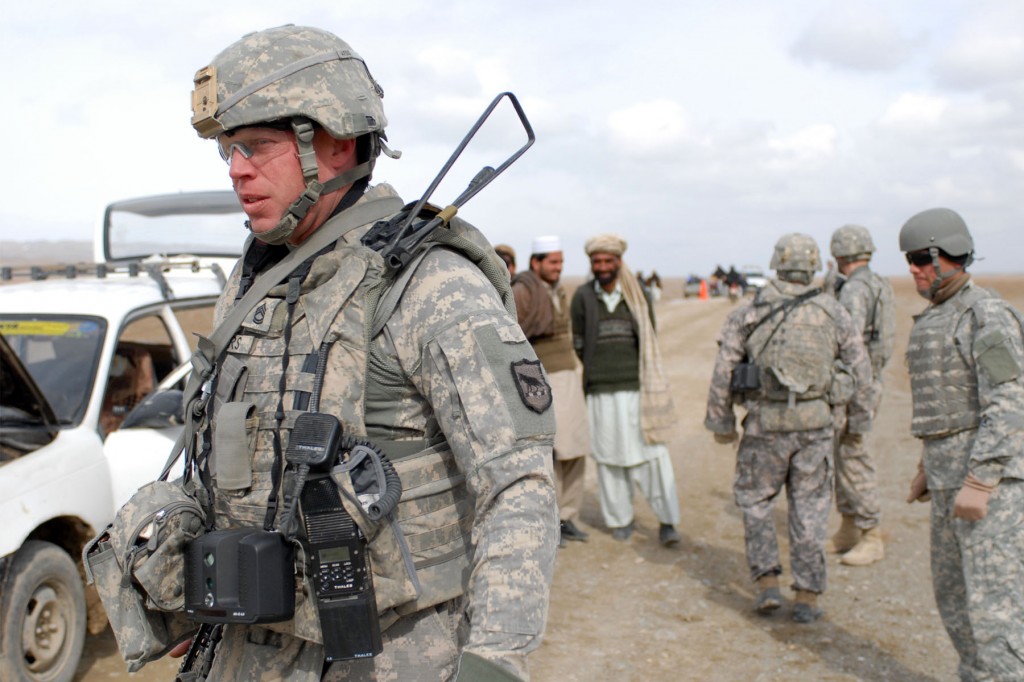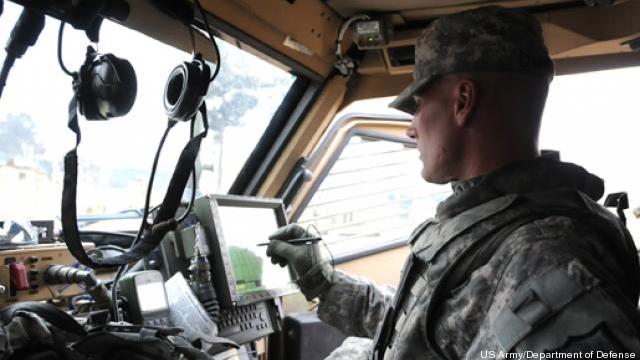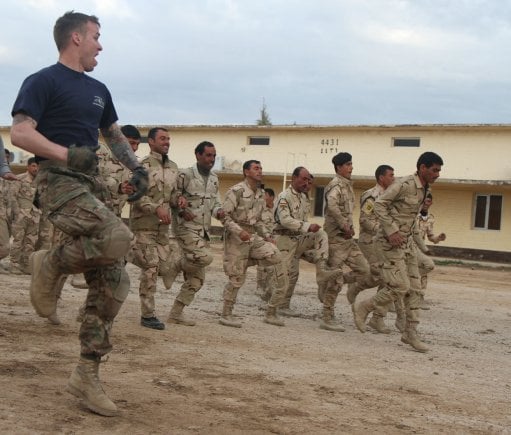Guard Should Specialize In COIN: War College Study
Posted on

South Dakota National Guard soldiers on duty in Afghanistan.
WASHINGTON: Instead of begging for more money — which won’t come — it’s time to face facts and use the fiscal pressure to force efficiencies and reforms, says a new report from an elite group of officers at the Army War College, the service’s school for future generals.
Army leaders “prefer to be prepared for anything and everything, resulting in public calls for more resources,” the authors write, and that has led in part to “an incoherent Army narrative.”
The Army’s “can-do” culture can be its own worst enemy, said Lt. Col. (soon to be Col.) Paul Larson, one of the co-authors, at the American Enterprise Institute this morning. “We are so eager to accomplish whatever mission we’re handed,” he said, “that we don’t engage in an honest conversation” about what the Army can and should do. In their “Elihu Root Study” (named after a famous Secretary of War), the “Carlisle Scholars” group open fire at several sacred cows. Their three key recommendations (in my mind) are
- Have the regular Army specialize in conventional wars; focus the Reserves and Guard on counterinsurgency.
- Dissolve the Army’s administrative theater commands and use their manpower to build more operationally-oriented corps headquarters.
- Build dedicated advisor units, something Army Chief of Staff Gen. Mark Milley is publicly considering.
The study’s most controversial recommendation is that regular active-duty Army should focus its training primarily — though not exclusively — on conventional war (“Combined Arms Maneuver” or CAM), which requires constant training and rapid deployment in case, say, Russia threatens to blitzkrieg the Baltics. Have the Reserve and National Guard focus on counterinsurgency and stability operations (“Wide Area Security” or WAS). Guerrilla wars and reconstruction efforts tend to unfold over longer timescales — long enough to mobilize citizen-soldiers — and they require skills best acquired in civilian life, from law enforcement to city management to agriculture.
The problem with this idea is that the Army National Guard has fought for decades to retain its combat forces and expensive, high-end warfighting gear, from M1 tanks to Apache helicopters. (The Army Reserve, by contrast, specializes in support roles such as military police). However, conventional warfare is traditionally far more prestigious in the Army than counterinsurgency or peacekeeping, so many in the Guard feel the study’s division of labor would relegate them to second-class status.
Conversely, relegating counterinsurgency to the Guard and Reserve would send a message to many in the regular Army that it was a second-tier mission for second tier troops. Indeed, one of the first questions at AEI this morning was: “If it’s that important, then how come it isn’t what the Active Component should be doing? [Historically,] if the Army considers something important, it’s the job of the Active Component.”
So implementing this recommendation would require a cultural shift in the Army itself about who and what deserves respect.

Consolidate HQs: No Theater Armies, More Corps
The Army’s high-level headquarters structure is at once redundant and undermanned, the study argues. Currently, five geographical combatant commands boast an Army Service Component Command (ASCC), aka a “theater army,” that handles day-to-day administrative duties and would require reinforcement to manage a major operation. Alternatively, a corps headquarters — a pure-bred operational HQ — could deploy to run the war, but the Army only has three, none of them located anywhere near a potential warzone: I Corps is in Washington State, III Corps in Texas, and XVIII Airborne Corps in North Carolina.
What’s worse, both the theater armies and the corps are undermanned and being cut further. “The reality is, none of them right now have the operational capacity to do [a major operation] because we’re cutting personnel out of them,” said report co-author Col. Kevin McAninch, speaking at AEI.
“Today the combatant command requirement [worldwide] in all the operational plans is for five corps headquarters if we had multiple simultaneous fights. We currently have three,” McAninch said. “Those three are in the process of undergoing a 20 percent personnel cut.”
“We have [five] Army Service Component Command headquarters out in the force,” he continued, “[but] years ago, the decision was made to take operational command posts out of each one of those headquarters, so in essence they can’t fight either.”
So, why not consolidate our eight inadequate HQs into five adequate ones? The current operations-focused corps organization is a better model for these new HQs than the administratively-focused theater armies, the authors say thank yo, so they should be called corps.
But one aspect of the disbanded theater armies should be retained. Instead of being based in the US like the current three corps, the new corps HQs should be permanently forward in their assigned theater of operations, so they can build regional knowledge and relationships.

An 82nd Airborne soldier trains Iraqi troops.
Advisor Brigades
Building such regional knowledge and relationships has been an uphill battle for the Army. For example, even after 15 years of mentoring Afghan and Iraqi forces, with very mixed success, the Army still creates advisor teams ad hoc out of combat units instead of having dedicated units with language skills and regional knowledge. Although special operations troops specialize in working with foreign militaries they can’t meet the huge demand for advisors in Iraq, Afghanistan, the Philippines and elsewhere, so conventional troops get tapped to assist — with little training.
Army officers turned scholars like Jon Nagl and Andrew Krepinevich have long argued for specialized “security assistance” brigades and an advisor corps. Advisors would then have the same kind of formal schooling and promotion incentives as existing Army branches like armor, infantry, or artillery. But the Army establishment didn’t want to “lose” combat personnel to such a specialty. That may change since Chief of Staff Gen. Mark Milley is considering the idea. The Carlisle study recommends a “Security Force Assistance Brigade” (SFAB) in each geographic combatant command, under their newly organized corps headquarters (see above).
Each “brigade” would have 250 personnel who would alternate assignments in that specific brigade with tours in conventional units and courses at an Advisor School. They would return over and over to the same region and the same unit throughout their careers.
Such organizational and cultural change is necessary to keep talent in and institutional memory of counterinsurgency operations. Speaking alongside the report authors at AEI, Center for a New American Security scholar Phillip Carter recounted passing a platoon in training doing a road march and noting that (only) four out of 30 had a combat patch. It reminded me how quickly the experience of Iraq and Afghanistan is fading.”
“In any given platoon, any given company, it’s roughly 20 percent of the unit that’s served in Iraq and Afghanistan; and in four to five years, it’ll be zero, or close to it,” said Carter. “Without the institutionalization of these lessons… we’re going to lose all of this.” And we may still have troops in Iraq or in Afghanistan then.
Subscribe to our newsletter
Promotions, new products and sales. Directly to your inbox.
